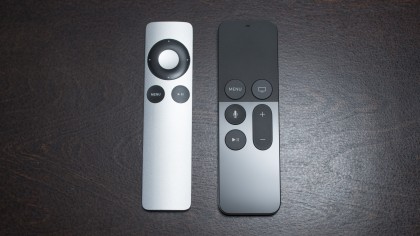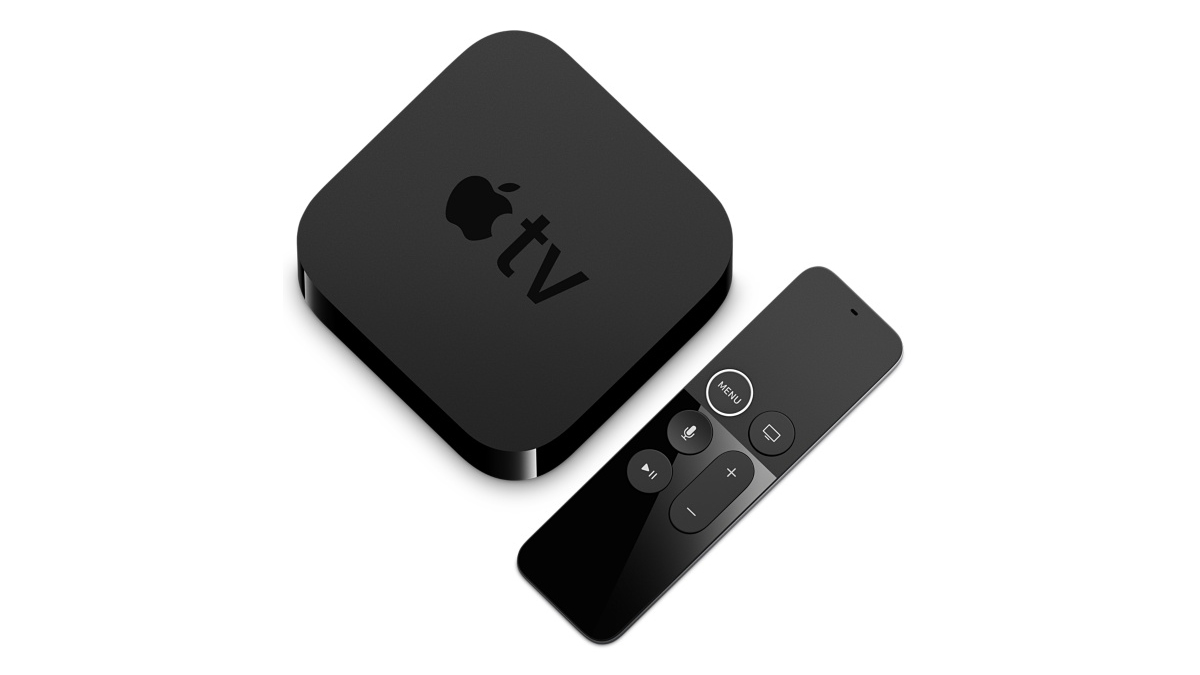Why you can trust TechRadar
With the comparisons out of the way, let's move on to the design of the Apple TV HD. Overall the unit has the same premium feel you'd expect from an Apple product: It's glossy, sleek and completely understated.
It's bigger than I expected, though. It's about the size of two old Apple TVs stacked on top of each other and then fused together with an still-pretty-fresh A8 chip at the helm of the ship.
As you might expect, it pairs nicely with the new Siri Remote, the primary way you'll control your new piece of plastic (though Apple has recently re-released its Remote app for iOS with Apple TV support, giving you a choice in the matter).

But, despite how it sounds so far, just know it's not sunshine and rainbows in Apple's venture into the living room.
Apple TV HD Design
Let's start with some stats. The Apple TV HD is, again, about twice the height of the last iteration but not much wider at 1.4 x 3.9 x 3.9 inches/35 x 98 x 98mm (H x W x D). It's a small footprint for a video streaming box, and one that seems even smaller when combined with its sleek black, inconspicuous exterior.
Speaking of the exterior, there's not a lot to see on the box. There's a small white LED indicator on the front of the unit and an Apple logo carved into the top. It's about as minimalist as an Apple-designed product has ever been, and that's a very good thing.
Spin the unit around you'll find your standard 10/100BASE-T Ethernet, HDMI 1.4 and USB-C ports, though the latter is only used for service and support. It's not all that exciting, honestly, especially considering the last Apple TV came with an optical audio-out connection.

At least the technology packed on the inside of the Apple TV is a different story.
For starters you'll find a much-improved Apple A8 processor, a proprietary chip the Cupertino company introduced with the iPad Mini 4 and iPhone 6. It also supports 802.11ac Wi-Fi, which should offer faster, uninterrupted streaming for anyone upgrading from an older model.
Siri Remote
The main attraction however is the new Siri Remote. The remote, alongside the new tvOS, are the two biggest reasons to jump onto Apple's living room bandwagon.
Feature-wise, the Siri Remote sports a built-in microphone for Siri support and a matte touch pad, as well as a number of sensors that developers are still wrapping their heads around.
There are only six buttons on each unit (seven if you're including the touchpad, which can be clicked down), but really you'll mostly use the top two buttons – menu and TV. Menu is a faux back button, while TV takes you all the way back to the home screen. It's not the most intuitive setup, obviously, and one which Apple can improve upon in the future.

But what I do like is that the Siri Remote doesn't use batteries. You'll recharge the remote by plugging the included lightning cable into any USB port on your laptop or PC. This could be problematic down the road once the battery starts to wear out, but battery life isn't a huge concern as the remote has yet to die after a week of testing.
Apple TV HD interface
With the remote in hand and your unit set in the center of your entertainment space, it's time to plug in and enjoy your new hardware.
Setup takes minutes and can either be done by manually entering information using the Siri Remote (this is not recommended) or by syncing the unit with your iPad or iPhone via Bluetooth.
The latter pulls all the data it needs – your Wi-Fi network ID, the password and your iTunes account info – in a matter of seconds and brings you to the stunning new home screen. (Make sure you check the "do not share my information" box during setup if you don't want your data to be shown and distributed to potential advertisers.)
The UI is divided into three main parts: a highlight bar that can store five apps and show real-time updates or highlighted content from those apps (the second area), and an area where the rest of the apps live underneath.

The Music, Photos, iTunes Movies, iTunes TV Shows and the Apple TV App Store apps start off in the highlight row initially, but these can be swapped out at any time by pressing and holding down the the touchpad on the remote.
The interface is clearly inspired by iOS. It places apps on the front page, never hiding anything from view. Navigation from one section to the next feels like a natural process – despite the new Siri Remote's buttons having confusing words or pictures on them. Similar to other iOS devices, however, there's no way to really personalize the theme or make the unit your own other than by adding different apps than your neighbor. It's still a walled garden, if a slightly bigger one than before.
That said, inside and out, the Apple TV HD is cleanly built and radiates the simplistic aesthetic many have come to love.
Current page: Design and interface
Prev Page Introduction and overview Next Page Content and performanceNick Pino is Managing Editor, TV and AV for TechRadar's sister site, Tom's Guide. Previously, he was the Senior Editor of Home Entertainment at TechRadar, covering TVs, headphones, speakers, video games, VR and streaming devices. He's also written for GamesRadar+, Official Xbox Magazine, PC Gamer and other outlets over the last decade, and he has a degree in computer science he's not using if anyone wants it.

